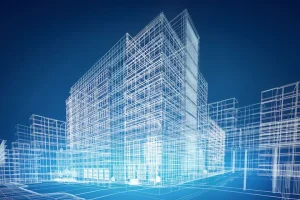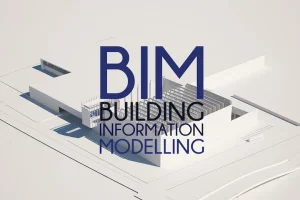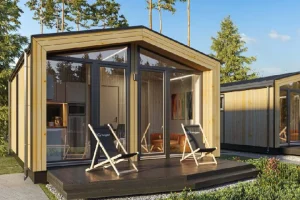Choosing the type of building frame is one of the most important decisions to be made in the early stages of designing and building a project. This choice can have significant impacts on costs, construction time, quality of the structure, and its safety against various loads such as earthquakes, wind, and temperature changes. For this reason, understanding the different criteria for choosing the right frame is essential. Today, in this article, we are going to first introduce you to the types of building frames and then come to a conclusion in choosing the best type of building frame and examine its criteria. Follow us until the end.
Types of building skeletons
1. Concrete Frame
Concrete frame is one of the most common types of building frames in which reinforced concrete is used as the main material for building the structure. This type of frame is very suitable for tall buildings, towers, and commercial and residential structures, as it has the ability to withstand heavy loads and various pressures. Also, reinforced concrete has high resistance to fire and temperature changes. One of the advantages of concrete frame is its high durability and strength. This type of frame is suitable for large and complex projects due to the physical and mechanical properties of concrete, such as high resistance to pressure and tension. In addition, the maintenance cost of this type of structure is lower than other types of frames, especially in the long term, and it is very economical in terms of useful life.

2. Steel Frame
Steel frame is another widely used type of building frame that uses steel as the main material. Steel is very suitable for building high-rise buildings or industrial structures due to its excellent physical properties such as high strength, flexibility and ductility. This type of frame has the ability to withstand heavy and dynamic loads and is usually used in structures that require high strength and durability. Another advantage of steel frame is the speed of project implementation. Steel connections can be easily prefabricated and installed, which speeds up construction and reduces project time. Also, steel frame has good resistance to earthquakes and environmental changes such as wind and storms and shows good performance. This type of frame is especially effective in earthquake-prone areas and tall structures.
3. Wooden Frame
Wooden frame is one of the oldest types of building frames, which is mostly used in the construction of villas and small houses. This type of frame is very popular in some areas due to the easy availability of materials and its low cost. Wood is known as a light, durable, and yet beautiful material and is suitable for houses designed in a traditional or rustic style. One of the features of wooden frame is its lightness and flexibility, which makes it useful for areas with low loading or earthquake-prone areas. Wood is also a good insulator against heat and sound. However, it should be noted that this type of frame is vulnerable to fire and requires regular care and maintenance. However, the use of treated wood can increase its resistance to various environmental conditions.
4. LSF (Light Steel Frame) skeleton
LSF frame or lightweight steel frame is an advanced type of structure made of lightweight steel profiles. This system has quickly found its place in the construction industry due to its light materials and high installation speed. In this method, light steel parts are used to build the skeleton of buildings, which helps reduce construction costs and project time.
One of the main advantages of the LSF frame is its very high resistance to tensile and compressive forces. Also, this system does not require heavy foundations due to the lightness of the materials and can be used in various projects such as residential houses, commercial and office buildings. Other features of this system include good thermal and acoustic insulation and high durability against various environmental conditions.

5. Metal Frame
Steel frames, which are usually made of various metal alloys, are very popular in the construction of complex and large structures due to their high strength and flexibility. This type of frame is especially used in industrial, commercial buildings and towers. The main advantage of steel frames is that its parts can be easily prefabricated in the factory and installed on site. Due to its excellent properties against dynamic and static loads, steel frames are a suitable option for projects sensitive to vibration or earthquakes. In addition to high strength, this type of frame also allows for special and modern designs. Also, the speed of implementation of this type of structure is very high, because metal connections are easily installed and do not require much time for hardening on site.
6. Precast Concrete Frame
Precast concrete frame is a modern construction method in which concrete parts are prefabricated and then installed at the project site. This method has many advantages, including high speed of implementation and reduced labor costs. Using this system, high quality and precision structures can be built in a short time. The use of prefabricated concrete parts in the construction of the frame minimizes the need for on-site concrete operations, so the construction time can be significantly reduced. In addition, prefabricated concrete parts have very high resistance and can perform well against temperature changes, humidity and even fire.
7. Composite Frame
Composite frame refers to the use of a combination of different materials to build the skeleton of a building. This type of frame is usually made of a combination of steel and concrete or steel and wood. Using different materials together allows each material to offer its best features in the project. One of the major advantages of composite frame is that it can easily respond to different project conditions. For example, where high strength and resistance to heavy loads are required, concrete can be used, and in parts where flexibility is required, steel or wood is used. This type of frame is very suitable for tall and complex buildings that require a combination of different features.

What is the best type of building frame?
The LSF (Light Steel Frame) skeleton is known as one of the best types of building skeletons, because this system provides a combination of strength, lightness, and high speed of execution. In this system, light steel profiles are used to build the structure, which due to its low weight reduces the need for heavy foundations and lowers the costs of construction and implementation of the project. Also, the speed of installation of parts in this system is very high, because these prefabricated parts are easily installed on site and do not require much time for construction and preparation on site. These features make the LSF skeleton very suitable for projects that require precise timing and optimal costs.
Compared to other types of building skeletons such as concrete or heavy steel skeletons, the LSF system has significant advantages. For example, concrete frames require a long time for the concrete to set and dry, and they incur high costs for transporting and installing materials. Also, heavy steel frames require more costs and time to implement projects due to their high weight and the need for more complex connections. While LSF frames have lower maintenance costs due to their lightness and ease of installation and can easily withstand environmental changes and weather conditions. This system also improves the quality of life of residents and reduces energy costs due to its high thermal and acoustic insulation capabilities, making it an ideal option for residential and commercial buildings.

The main criteria for the best type of building frame
1. Structural strength and durability
The strength and durability of the structure is one of the most important criteria for selecting a building frame. Each frame must be able to withstand vertical and horizontal loads, including those caused by earthquakes, wind, and snow. In this regard, frames such as steel and concrete are suitable options due to their high resistance characteristics. The choice of the type of frame should be based on a detailed analysis of the loads on the structure and environmental conditions to prevent future problems. In general, steel and concrete frames have very high resistance to heavy loads and harsh conditions, while frames such as wood and LSF are more suitable for lighter projects.
2. Construction and implementation costs
The cost of construction and implementation of a building frame plays a decisive role in choosing the best type of frame. For many projects, reducing construction costs without reducing the quality and safety of the structure is of great importance. In general, heavy concrete and steel frames are more expensive than lightweight frames such as LSF or wood. The LSF system can significantly reduce construction costs due to the use of lightweight steel profiles and high speed of installation. Also, this type of frame does not require heavy foundations, which itself helps to reduce costs.
3. Construction speed and project scheduling
Speed of construction is an important factor in choosing the type of building frame. Construction projects usually require rapid completion to reduce additional costs and to start operating the structure quickly. In this regard, lightweight steel frames (LSF) and precast have significant advantages. These types of frames reduce construction time due to the use of prefabricated parts and quick connections, and as a result, the project reaches the operating stage faster. Compared to concrete frames, which require a lot of time for concrete to set and construction on site, steel and LSF frames are installed much faster.
4. Resistance to earthquakes and environmental changes
One of the most important features to consider when choosing a frame type is the structure’s resistance to earthquakes and environmental changes. Earthquake-prone areas require structures that are resistant to seismic forces. Steel frames perform better against dynamic forces such as earthquakes due to their high flexibility. These types of frames can easily absorb the forces acting on the structure and prevent serious damage. In contrast, concrete frames may be more vulnerable to earthquakes due to their high stiffness, but they perform well if seismic reinforcements are used correctly.
5. Thermal and acoustic insulation
Proper thermal and acoustic insulation is another important criterion in the selection of a building frame. Steel and concrete frames are not naturally good insulators against sound and heat, unless additional insulation is used. However, LSF frames can easily provide more favorable conditions for insulation due to the use of lightweight materials and the ability to be combined with insulating materials. This feature is especially important in residential and commercial buildings, as it reduces energy consumption and increases the comfort of the occupants. For this reason, lightweight steel frames and prefabricated systems are typically used in projects that require high insulation.
6. Stability and durability of the structure
Durability and stability of the structure are other critical factors in choosing the type of building frame. Frames made of durable and resistant materials naturally have a longer life and require less repair and maintenance. Concrete frames are durable due to their high resistance to moisture and environmental factors, but they are relatively heavier. In contrast, lightweight steel frames (LSF), which are produced using galvanized steel and corrosion-resistant coatings, achieve high durability and are very suitable for projects with difficult environmental conditions and high humidity areas. This stable feature makes LSF frames the best option for buildings that require low maintenance and long life.

Final Words
As you can see, in this article, we have thoroughly introduced the best type of building frame. We said that the choice of the type of building frame should be made based on the specific needs of the project, environmental conditions, budget and timing. Each type of frame has its own unique characteristics and may perform better in different situations. In particular, lightweight steel frame (LSF) has become one of the best options for many projects due to its excellent combination of strength, lightness, lower cost and high speed of implementation. By considering all the criteria mentioned, the best type of frame for the project can be achieved and the construction of a safe, durable and cost-effective structure can be guaranteed. Thank you for your support until the end of this article.
Ohaddeco Group specializes in the design and implementation of LSF structure, various types of kit houses, and interior coatings such as wooden acoustic wall covering and wooden thermowall. Dear friends, you can contact our experts through communication bridges to obtain more information and receive free advice.




